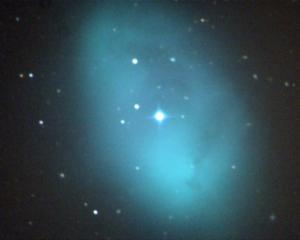Their discovery has defied accepted science and might help turn the building blocks of life into ultrafast quantum-logic computers, which are still being developed.
Mikkel Andersen, Tzahi Grunzweig, Andrew Hilliard and Matt McGovern started work on the project three years ago.
They captured their first atom on January 26, but took another four days to accept what had happened.
"We set it up and we anticipated trying to start slowing the atoms down," Dr Grunzweig said.
"The surprise for us was that it [the trapped atom] wasn't supposed to be there yet. It was more than we expected."
They went on to show their technology could capture and isolate atoms 83% of the time.
Before then, Mr McGovern said, most scientists believed only 50% was possible.
Dr Andersen, the team leader, said it meant scientists could have "deterministic control" of atoms: they could trap and use them almost at will.
Unlike conventional silicon-based computers, which generally perform one task at a time, quantum computers have the potential to perform numerous long and difficult calculations simultaneously; including breaking secret codes that would usually prove too complex, he said.
"Our method provides a way to deliver those atoms needed to build this type of computer. It is now possible to get a set of 10 atoms held or trapped at the one time," he said.
Trapping the atoms meant new technologies, such as atom-based quantum computers, were potentially easier to conceive.
A set of 30 atoms was needed to build a quantum computer capable of performing tasks better than existing computers.
The Otago team's method could trap a set of 10 at any one time.
"It is not enough to be able to see the atom at a place the atom decides to be, you need to be able to deliver them for them to be of use," Dr Andersen said.
"So, what we have done opens up the opportunity to use what we now know to develop technology on the very smallest scale.
"We are excited about what we have learned, but there may be many other breakthroughs because of this."
The atoms the team targeted move at the speed of sound and are so small that 1 million of them, laid side-by-side, would be as thick as a piece of paper.
They used a $575,000 network of lasers in a scheme they developed themselves, to cool and dramatically slow a group of rubidium 85 atoms.
A laser beam, which Dr Andersen called "optical tweezers" and likened to a science-fiction tractor beam, was then used to isolate and hold an atom.
The atom was held near a microscope and, using a camera designed for space, photographed - the first time for a rubidium 85 atom.
The team's results are scheduled to be published today in leading scientific journal Nature Physics.
There was already significant interest in their method, their laser technology, and their imaging technique, Dr Andersen said.
They are now trying to generate a state of entanglement between the atoms, which would help quantum computers perform tasks simultaneously.
The project is one of eight at the university working on quantum technologies to receive funding from the Foundation for Research, Science and Technology.
All up, that funding was worth $6.8 million, a university spokeswoman said.











